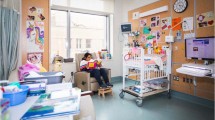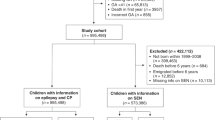Abstract
Global estimates show that 10–20% of persons express developmental disability. During critical and sensitive periods of developmental neuroplasticity over the first 1000 days, adverse gene-environment interactions are likely to contribute to permanent life-long disabilities and early mortality. This article describes fetal-neonatal neurology (FNN) program development that integrates vertical and horizontal diagnostic perspectives. Trimester-specific conditions to the maternal-placental-fetal triad begin at conception, followed by pediatric patient care over the first two years of life to address changing phenotypic form and function. While fetal and neonatal neurology trainees prepare to offer person-centric healthcare, population-based considerations address obstacles to optimal health relevant to resource-rich and poor nations. Maternal and pediatric care practices over the first 1000 days underscore equitable health policy. Global initiatives apply geographic distance, biosocial dynamics, and cultural differences to developmental origins and life-course theories, to more effectively reduce disease burden over the life continuum.
This is a preview of subscription content, access via your institution
Access options
Subscribe to this journal
Receive 12 print issues and online access
$259.00 per year
only $21.58 per issue
Buy this article
- Purchase on Springer Link
- Instant access to full article PDF
Prices may be subject to local taxes which are calculated during checkout
Similar content being viewed by others
References
Rudolph C, Rudolph A, Lister GE, First LE, Gershon AA. Rudolph’s pediatrics. 22nd ed. New York, NY: McGraw-Hill Professional; 2011.
Zablotsky B, Black LI, Maenner MJ, Schieve LA, Danielson ML, Bitsko RH, et al. Prevalence and trends of developmental disabilities among children in the US: 2009–2017. Pediatrics 2019;144:e20190811.
Centers for Disease Control and Prevention. Developmental disabilities increasing in US: www.cdc.gov/features/dsdev_disabilities.
Murray CJ, Lopez AD. Quantifying disability: data, methods, and results. Bull World Health Organ. 1994;72:481–94.
(IHME), I. f. H. M. a. E. GBDCompareDataVisualization. 2016. http://vizhub.healthdata.org/gbd-compare. Accessed January 2017.
Newton CR. Global burden of pediatric neurological disorders. Seminars Pediatr Neurol. 2018;27:10–15. https://doi.org/10.1016/j.spen.2018.03.002.
Scher MS. “The First Thousand Days” define a fetal/neonatal neurology program. Front Pediatrics. 2021;9:683138. https://doi.org/10.3389/fped.2021.683138.
Ismail FY, Fatemi A, Johnston MV. Cerebral plasticity: Windows of opportunity in the developing brain. Eur J Paediatr Neurol. 2017;21:23–48. https://doi.org/10.1016/j.ejpn.2016.07.007.
Kolb B, Harker A, Gibb R. Principles of plasticity in the developing brain. Dev Med Child Neurol. 2017;59:1218–23. https://doi.org/10.1111/dmcn.13546.
Scher MS. Neurologic outcome after fetal inflammatory response syndrome: Trimester-specific considerations. Semin Fetal Neonatal Med. 2020;25:101137. https://doi.org/10.1016/j.siny.2020.101137.
Di Renzo GC. The great obstetrical syndromes. J Matern Fetal Neonatal Med. 2009;22:633–5. https://doi.org/10.1080/14767050902866804.
Khong TY, Mooney EE, Ariel I, Balmus NC, Boyd TK, Brundler MA. et al. Sampling and definitions of placental lesions: Amsterdam Placental Workshop Group Consensus Statement. Arch Pathol Lab Med. 2016;140:698–713. https://doi.org/10.5858/arpa.2015-0225-CC.
Smyser CD, Tam EWY, Chang T, Soul JS, Miller SP, Glass HC. Fellowship training in the emerging fields of fetal-neonatal neurology and neonatal neurocritical care. Pediatr Neurol. 2016;63:39–44.e3. https://doi.org/10.1016/j.pediatrneurol.2016.06.006.
Newborn Brain Society. http://newbornbrainsociety.org.
Scher MS. Training in fetal-neonatal neurology: principles to guide practice for career-long learning. Pediatr Neurol. 2017;67:1–2. https://doi.org/10.1016/j.pediatrneurol.2016.09.011.
Lemmon ME, Donohue PK, Parkinson C, Northington FJ, Boss RD. Communication challenges in neonatal encephalopathy. Pediatrics. 2016;138:e20161234. https://doi.org/10.1542/peds.2016-1234.
Lemmon ME, Donohue PK, Parkinson C, Northington FJ, Boss RD. Parent experience of neonatal encephalopathy. J Child Neurol. 2017;32:286–92. https://doi.org/10.1177/0883073816680747.
Agarwal S, Scher MS, Tilton A. Cerebral palsy and rehabilitative care: The role of home-based care and family-centered approach. Indian Pediatr. 2021;58:813–4. https://doi.org/10.1007/s13312-021-2298-z.
Danziger P, Laventhal N. Prenatal consultation: perspectives on training, relevance, and utilization among pediatric subspecialty program directors. J Perinatol. 2018;38:989–96. https://doi.org/10.1038/s41372-018-0121-z.
Power C, Kuh D, Morton S. From developmental origins of adult disease to life course research on adult disease and aging: insights from birth cohort studies. Annu Rev Public Health. 2013;34:7–28. https://doi.org/10.1146/annurev-publhealth-031912-114423.
Strong Foundations: Getting it Right in the First 1000 Days is a collaboration between the Centre for Community Child Health at the Murdoch Children’s Research Institute (MCRI); the Australian Research Alliance for Children and Youth (ARACY); Bupa Australia; the Bupa Health Foundation and PwC Australia. The First Thousand Days—A case for investment (rch.org.au). 2019.
Moore TG, Arefadib N, Deery A, West S. The first thousand days: An evidence paper. Parkville, Victoria: Centre for Community Child Health, Murdoch Children’s Research Institute; 2017.
World Health Organization (WHO). Reaching the every newborn national 2020 milestones: country progress, plans, and moving forward. Geneva: WHO; 2017.
Moller AB, Patten JH, Hanson C, Morgan A, Say L, Diaz T. et al. Monitoring maternal and newborn health outcomes globally: a brief history of key events and initiatives. Tropical Med Int Health. 2019;24:1342–68. https://doi.org/10.1111/tmi.13313.
Author information
Authors and Affiliations
Contributions
Dr. Agarwal conceptualized and designed the study, drafted the initial manuscript, and reviewed and revised the manuscript. Dr. Scher conceptualized and designed the study, and critically reviewed and revised the manuscript. All authors approved the final manuscript as submitted and agree to be accountable for all aspects of the work.
Corresponding author
Ethics declarations
Competing interests
The authors declare no competing interests.
Additional information
Publisher’s note Springer Nature remains neutral with regard to jurisdictional claims in published maps and institutional affiliations.
Rights and permissions
About this article
Cite this article
Agarwal, S., Scher, M.S. Fetal-neonatal neurology program development: Continuum of care during the first 1000 days. J Perinatol 42, 165–168 (2022). https://doi.org/10.1038/s41372-021-01282-5
Received:
Revised:
Accepted:
Published:
Issue Date:
DOI: https://doi.org/10.1038/s41372-021-01282-5
This article is cited by
-
Advancing the Field of Fetal Neurology: A Call for Global Collaborations
Indian Pediatrics (2023)



